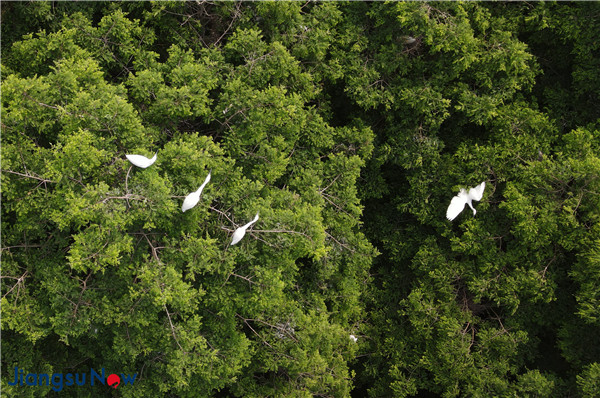As May 22 marked the International Day for Biological Diversity, East China’s Jiangsu Province announced the progress made in its biodiversity survey at the county-level, the first of its kind in the country.
This program has so far recorded 4,588 species after studies at 38 county-level pilot zones.

Photo taken on May 24, 2021, shows egrets at a wetland park in Guazhou of Yangzhou city. Photo/CFP
A team led by Lu Yu, assistant to dean of Academy of Environmental Planning and Design, Nanjing University, used satellite remote sensing and infrared cameras to monitor the biodiversity condition in Nantong City in 2016 and 2018-2019 respectively. He said that the number of species of plants and animals increased from 2,500 in 2016 to over 3,500 now, an indication of the improved ecological environment in the city.
During the 14th Five-Year Plan period, Jiangsu will actively promote the formulation of a regulation of biodiversity protection, establish a list of species that can work as environmental health indicators, and build a network of observation sites across the Yangtze River basin, the Grand Canal, coastal mudflats, Taihu Lake and Hongze Lake.
Yu Hongxia, deputy director of the Jiangsu Provincial Department of Ecology and Environment, said the province still needs solid efforts to ensure progress and adopts an approach focusing on preservation as first priority and then natural restoration. It’s necessary to strengthen protection of important ecosystems, rare and endangered species and genetic diversity. The province will keep stable the natural ecosystems, such as forests, rivers and lakes, wetlands and oceans, and bring to life their roles in the society. Meanwhile, Jiangsu will carry out the province-wide biodiversity baseline assessment, strengthen supervision, build ecological corridors, and form a network of biodiversity protection.
Contact us at english@jschina.com.cn




















